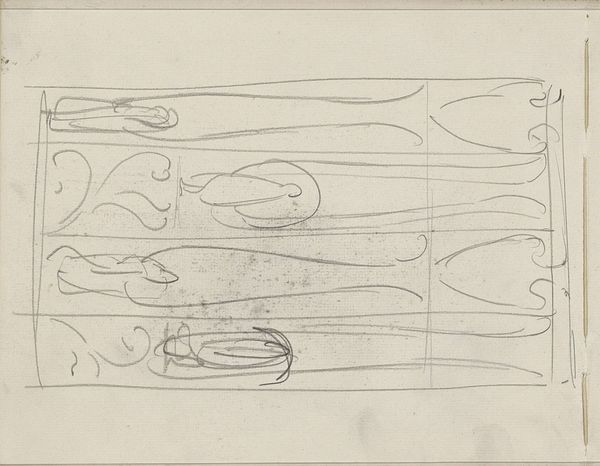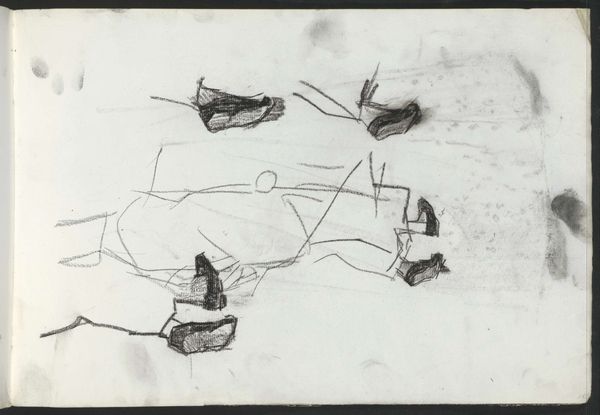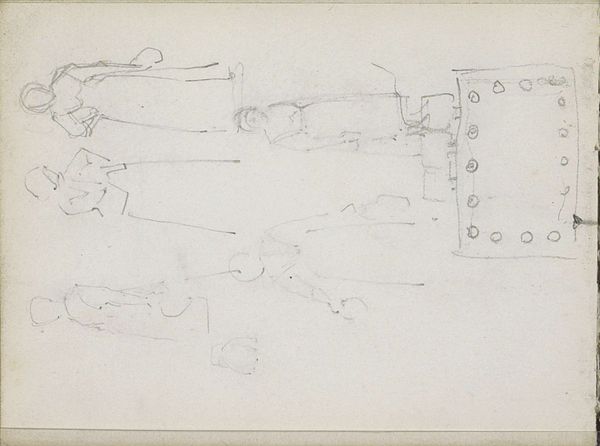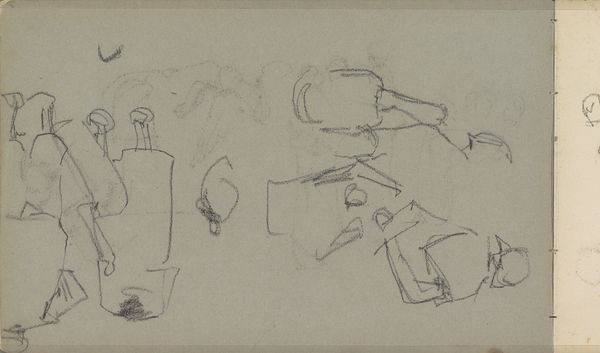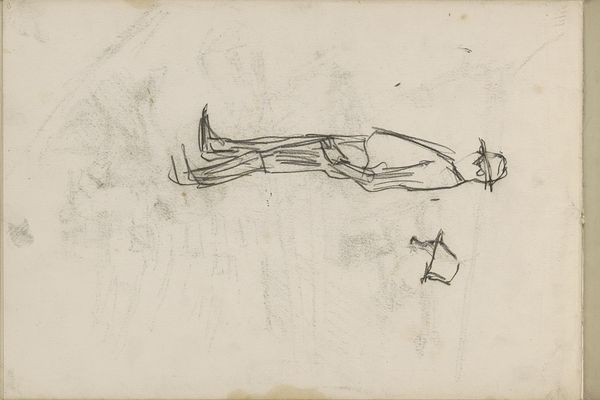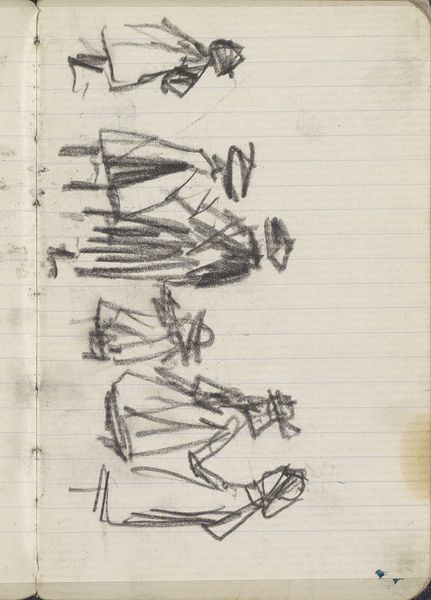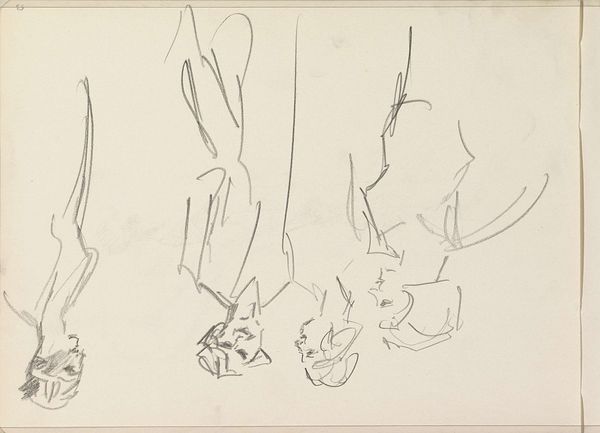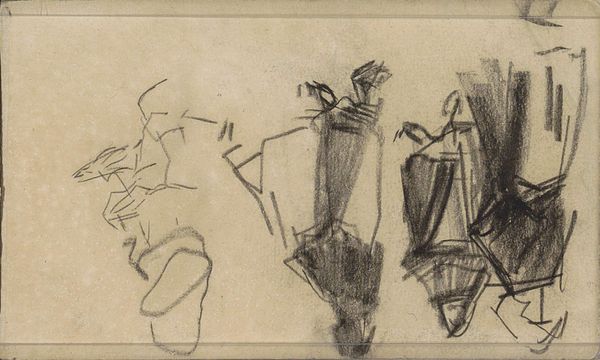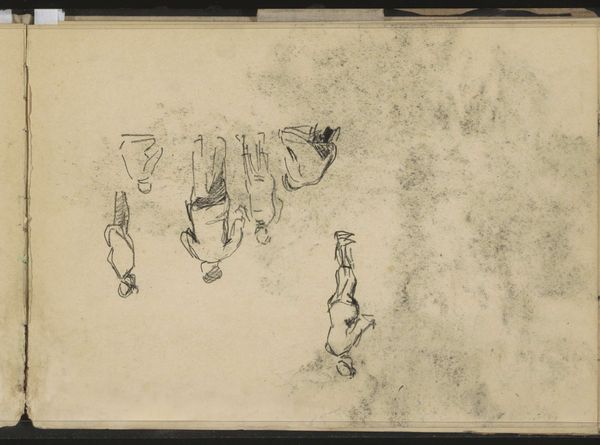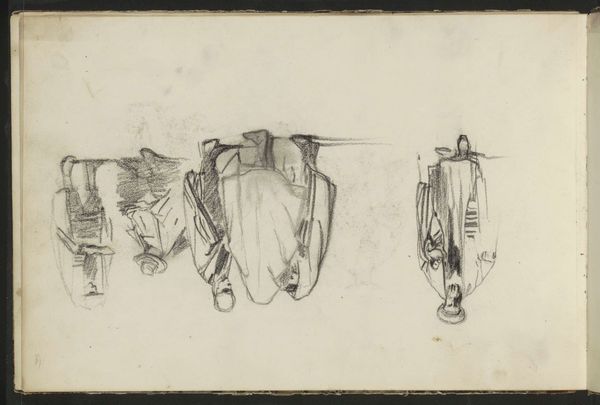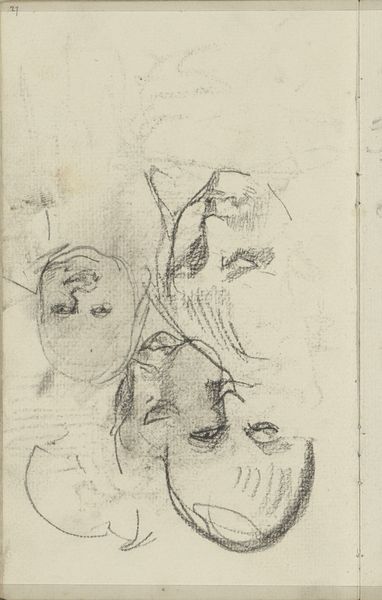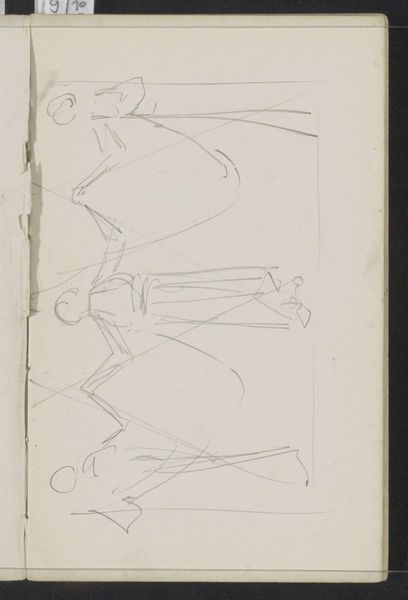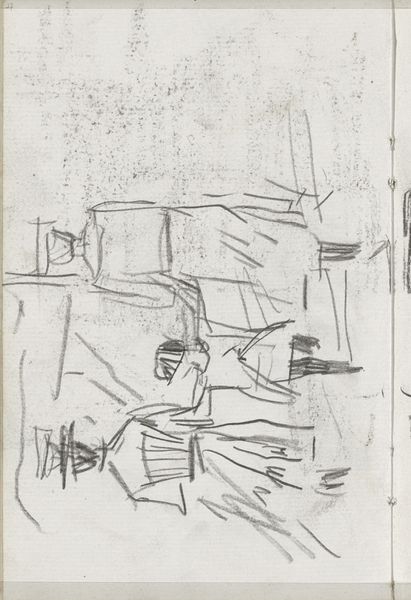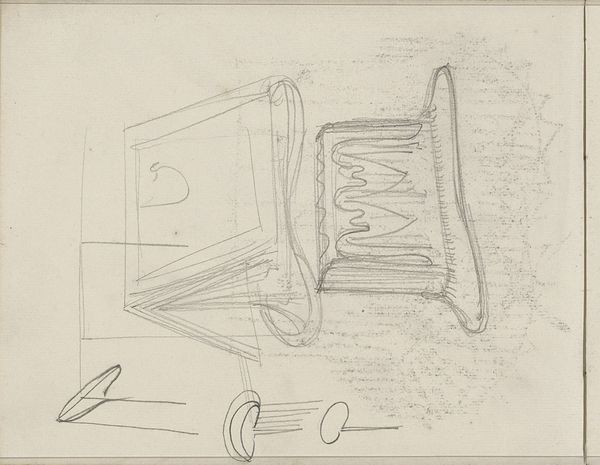
drawing, paper, glass, pencil
#
drawing
#
art-nouveau
#
pencil sketch
#
paper
#
glass
#
pencil
#
decorative-art
Copyright: Rijks Museum: Open Domain
Curator: Looking at these wispy sketches, I immediately feel transported back to a time when every object, even a drinking glass, was an opportunity for artistic expression. There’s something so hopeful in that. Editor: I agree, the vision of everyday beauty is striking. Here we have “Ontwerpen voor glazen met fantasiefiguren”, Designs for glasses with fantasy figures, by Carel Adolph Lion Cachet, circa 1895 to 1900. Preserved in the Rijksmuseum, it’s an intriguing pencil drawing on paper. And these aren't just any glasses, are they? They’re vessels intended to carry stories. Curator: Exactly! Each glass seems to whisper a different tale, a fragment of a myth or a whimsical dream. The lines are so fluid, almost as if the designs are blooming right before our eyes, a touch ephemeral like catching fireflies in the twilight. It's less about utility, and more about…well, pure joy! Editor: But joy manufactured for whom? It’s hard not to situate Art Nouveau’s organic lines and emphasis on beauty within the rising consumer culture of the late 19th century. While the designs may feel joyful, let’s remember who had access to that joy and the socio-economic conditions enabling this type of artistry to flourish. Were these meant for the working class? Probably not. Curator: Ah, the eternal question of art and access! Still, the intent, even if limited in scope, I feel it carries a certain resonance. These are drawings, quick studies in possibilities. And look at the marks themselves, almost tentative in their application! It feels so immediate and direct – as if Cachet sketched these visions on the back of a napkin while lost in thought. It is amazing that with so few marks and smudges he can evoke complete and whole shapes. Editor: True, the pencil strokes suggest a raw intimacy, an unfettered creative flow. But even those fluid strokes speak to the cultural moment. The Japonisme influence is palpable here, with the flowing lines, decorative motifs, and flattened perspectives mirroring popular styles from Japan gaining traction in Europe at this time. I am seeing so many potential conversations around power, commodity and consumer culture within this work! Curator: I adore that! Even simple, unassuming glass becomes a portal to bigger concepts. Well, perhaps this also illustrates our very different backgrounds too! It just speaks to different experiences. What you say resonates, I must concede. But the simple fact of this being so easily available in this era makes it resonate. And to be honest with you, it sparks joy in me as I have to concede in this age of commodity that it does indeed come back full circle. Editor: Ultimately, artworks are artifacts deeply entrenched in both the beautiful and, at times, not so beautiful elements of life and of any historical period. They can definitely provoke some intense debate!
Comments
No comments
Be the first to comment and join the conversation on the ultimate creative platform.
